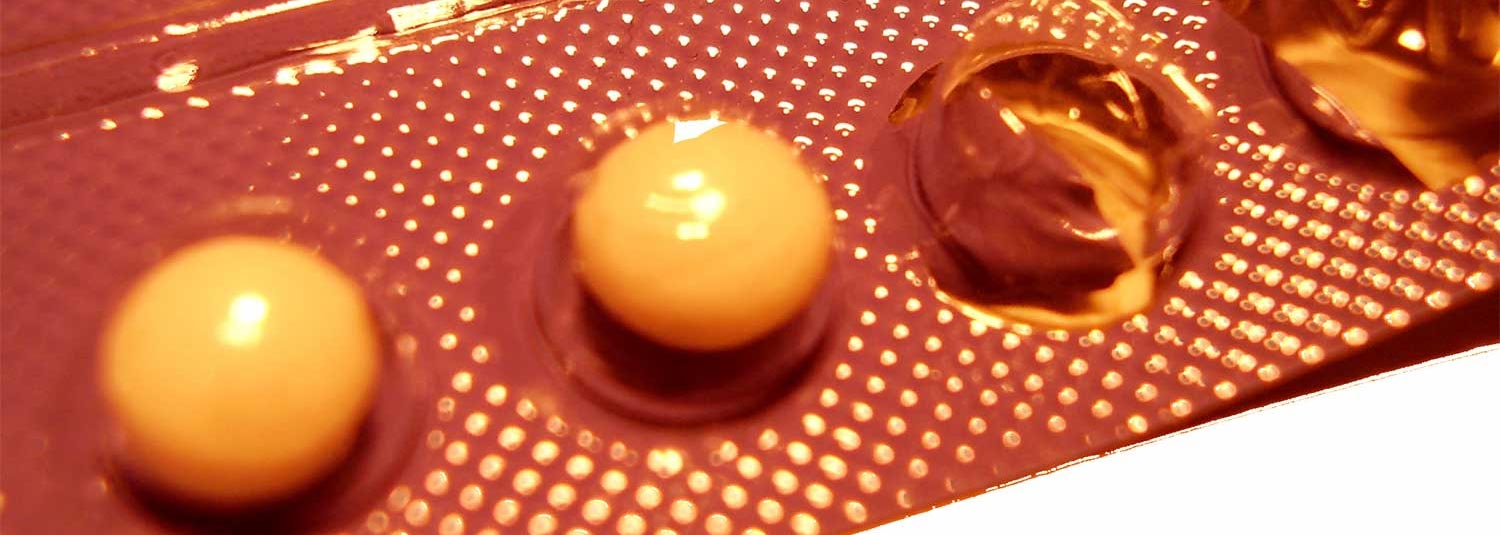 WHAT IS HORMONAL CONTRACEPTION (the ‘Pill’) ?
WHAT IS HORMONAL CONTRACEPTION (the ‘Pill’) ?
The ‘Pill’ consists of synthetic steroid sex hormones (synthetic oestrogen or progesterone) which interfere with the normal functioning of the menstrual cycle. Hormonal contraception obliterates the normal mechanism of the menstrual cycle.1
- NOTE: In this text the word ‘Pill’ refers to all hormonal contraception, whether taken orally, by injection, by patch or by pessary. (pessary = a device for inserting into the vagina as a support for the uterus or to deliver a drug such as a contraceptive).
Does the woman on hormonal contraception not have menstrual periods?
When a woman is taking hormonal contraception the apparent menstruation that occurs is not a true menstruation but consists only of a withdrawal bleed brought on by an abrupt drop in hormone levels during the Pill-free days. A true menstruation is the bleeding that occurs at the end of a normal ovulatory cycle when pregnancy does not occur and the endometrium (lining of the womb) was primed during the cycle first by oestrogen before ovulation and then by progesterone after ovulation.
THE ‘PILL’ – MODES OF ACTION
Hormonal contraception has three modes of action in preventing pregnancy but which mode of action is dominant in any particular cycle is unknown. 1,7
- The ‘Pill’ chemically sterilizes the woman by inhibiting normal functioning of the hypothalamic-pituitary-ovarian axis (HPO axis) thereby preventing ovulation occurring. However in some cycles ovulation may occur especially with the lower dose pills.
- The ‘Pill’ has a true contraceptive action as it stimulates the G mucus cells in the cervix to secrete G mucus which acts as a barrier to sperm.
- The ‘Pill’ has an abortifacient action as the progestagen content of the ‘Pill’ results in an “out of phase” endometrium which renders implantation of the fertilized ovum less likely.
The ‘Pill’ – Effects on Cervix, Vagina
-
Effects on G crypts of cervix : Hormonal contraception causes excessive development of G crypts in the lower cervix.1
-
Effects on S crypts of cervix : Hormonal contraception causes premature ageing of the cervix as the loss of S crypts is accelerated.1 The progestagens in the ‘Pill’ inhibit the activity of the S crypts and thus the biosynthesis of S mucus. Over a long period of ‘Pill’ activity the S crypts undergo attrition from disuse. While the present-day ‘Pill’ contains progestagens in much lower dosage than previously the fact is that they are much more powerful and they persist longer in the body.1 Restoration of the S and G crypts to normal on stopping the ‘Pill’ takes considerable time. In fact the S crypts may be permanently damaged and be a cause of infertility as the movement of sperm cells up the canal is reduced.3 After three and up to fifteen months of using hormonal contraception, there is a greater loss of the S crypt cells than can be replaced.4
- The ‘Pill’ and cervical erosion: There is an association of a cervical erosion (eversion) with ingestion of oral contraception, and once the woman stops ingesting progestins the cervical erosion may cause a persistent vaginal discharge which may confuse the mucus symptom.2 The term cervical erosion is applied when, in an adult, the stratified epithelium which normally covers the vaginal portion of the cervix is replaced by columnar epithelium which is continuous with that of the cervical canal but is often found in association with the taking of oral contraception.6 Most erosions are not infected, nor are they the result of inflammation. The only symptom caused by an erosion is a mucoid discharge which comes from the columnar epithelium of the erosion itself.6
- The effects of the ‘Pill’ on the Vagina, the Pockets of Shaw: If a young woman goes on hormonal contraception, the pockets of Shaw in the distal vagina are poorly developed.3
- Pockets of Shaw:2 “Mucus is changed in its passage from the cervix to the vulva. The pockets of Shaw are two structures in the distal vagina parallel to the urethra and they contain manganese. The function of manganese is to absorb fluid from the vaginal canal. Oestrogen suppresses the function of manganese, hence fluid can easily exit to the vulva when oestrogen dominates the cycle. After peak day L, S, and P mucus do not disappear immediately, but are no longer felt at the vulva as its fluid content has been reabsorbed”.1,2
- The ‘Pill’ as a cause of decreased perception of the mucus symptom at the labia minora: Mucus perception occurs at the surface of the labia minora of the vulva. The size of the area in the labia minora sensitive to mucus is decreased in women on the ‘Pill’ so the woman has difficulty in identifying the mucus symptom.5 (see page 2, in Pictures & Diagrams)
References:
- Hume Kevin MD; ‘The Biology of the cervix, A summary of the advances from the work of Erik Odeblad’ Effects of contraceptive medication on the cervix’ ; Bulletin of the Ovulation Method Research and Reference Centre of Australia, Vo 25, No 2, Pages 17-24, 1998,. (internet)
- Klaus H; ‘Natural family planning – Is it scientific? Is it effective?’see pages 14, 4; Newman Lecture Series 1;May 21; 2000. (online).
- Odeblad, E; ‘The discovery of different types of cervical mucus and the Billings Ovulation Method’ p 32, 25 ; Bulletin of the Ovulation Method Research and Reference Centre of Australia, Vol 21, No 3; 3-35; Sept 1994. internet; google ‘Erik Odeblad, cervical mucus’.)
- Odeblad E; “Some notes on the cervical crypts”; Bulletin of the ovulation method Research and reference centre of Australia, 27 Alexandra Parade, North Fitzroy, Victoria 3068, Australia; vol 24, No 2, page 31,1997.
- Odeblad Erik; ‘Investigations on the physiological basis for fertility awareness; Bulletin of the Ovulation Method Research and Reference Centre of Australia, Vol 29 No 1, March 2002; p2-11. (internet; www.woomb.org )
- ‘Gynaecology’ by Ten Teachers’; Ed. by Chamberlain G V P; 16th edition; 1995; ISBN 0 340 57315 5
- MARTINDALE; The Extra Pharmacopoeia 21st edition, 1996; The Royal Pharmaceutical Society; page 1484 ISBN:0-85369-342-0


